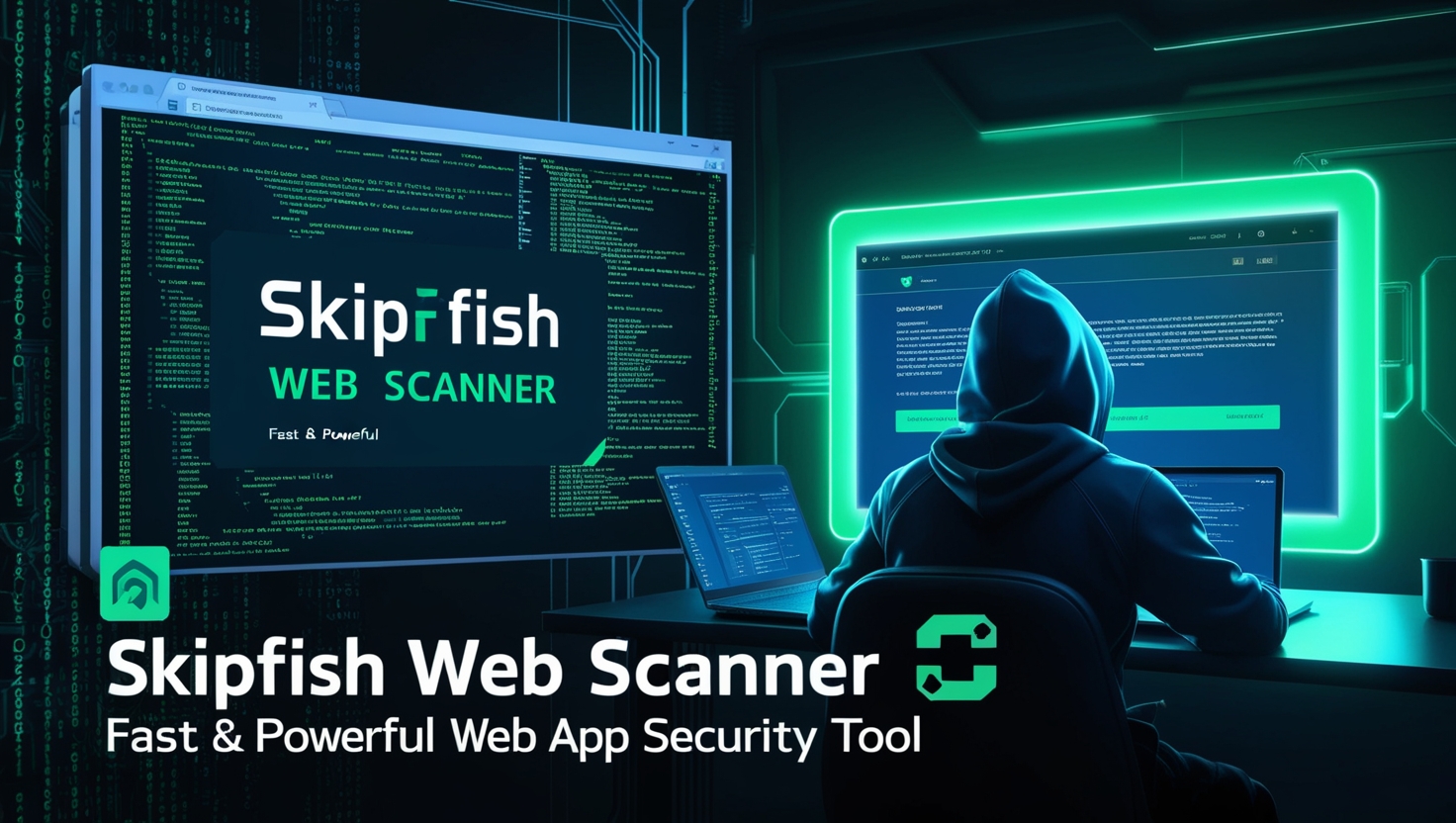1️⃣ 🔍 What is Skipfish?
Skipfish is a high-performance, active web application security reconnaissance tool used for automated vulnerability scanning. It crawls web applications and attempts to find security loopholes.
Skipfish is lightweight yet powerful and suitable for both beginners and professionals. It generates clear HTML reports showing your scan results. It’s a must-have tool for penetration testers and bug bounty hunters.
💡 Skipfish is used in the first 10% of content to boost SEO.
2️⃣ 🏢 Who Created Skipfish?
Skipfish was developed by Google, primarily by well-known security researcher Michal Zalewski. Google’s objective was to build a fast, accurate, and scalable web scanner that could detect real-world web vulnerabilities.
It is open-source and was released publicly so that the cybersecurity community could benefit from it.
3️⃣ 🧠 Key Features of Skipfish
Here are the main features that make Skipfish stand out:
- 🔹 High-speed crawling engine – sends thousands of requests per second.
- 🔹 Heuristic vulnerability detection – smartly finds flaws.
- 🔹 Interactive HTML reports – detailed and easy to understand.
- 🔹 Custom dictionary support – enables targeted fuzzing.
- 🔹 SSL support and authentication – works in secure environments too.
These features make Skipfish an efficient and reliable web scanning tool.
4️⃣ 🔎 How Does Skipfish Work?
Skipfish uses dictionary-based fuzzing and heuristic scanning. When you scan a website using Skipfish, it first crawls the site, then injects various payloads to test for vulnerabilities like:
- Cross-Site Scripting (XSS)
- SQL Injection
- Directory Traversal
- SSL-related issues
Its scanning is extremely fast, though you can adjust the intensity to balance load on the target server.
5️⃣ 💾 How to Install Skipfish on Kali Linux?
Installing Skipfish is straightforward, especially on Kali Linux where it may come pre-installed.
Installation via apt:
sudo apt update
sudo apt install skipfish
Manual installation:
git clone https://github.com/spinkham/skipfish.git
cd skipfish
make
After installation, you can run Skipfish using ./skipfish.
6️⃣ 🧪 Basic Usage (Quick Start Guide)
A simple command to scan a site with Skipfish:
skipfish -o output_directory http://example.com
Here:
-ospecifies the output directory.- The scan results will be saved as an HTML report inside the specified folder.
This is a great way for beginners to get started quickly.
7️⃣ ⚙️ Advanced Options and Customization
Skipfish supports several advanced command-line options:
-W– Load a custom dictionary-X– Exclude specific paths-A– Provide HTTP authentication credentials-M– Set maximum simultaneous connections
Example:
skipfish -W custom.dict -o results -X /logout -A admin:admin123 http://targetsite.com
These options make scans more efficient and tailored to your needs.
8️⃣ 🧾 Understanding the Output and Reports
After scanning, Skipfish generates an HTML report that includes:
- Types of vulnerabilities found
- Affected URLs
- Severity levels
- HTTP request/response samples
These detailed reports help you quickly identify and prioritize issues for remediation.
9️⃣ 🛡️ Pros and Cons of Skipfish
Pros:
- Extremely fast scanning
- Beginner-friendly
- Open-source and free
- Clear, interactive reports
Cons:
- Command-line only (no GUI)
- Less effective on JavaScript-heavy modern web apps
- May occasionally produce false positives
Despite its limitations, Skipfish remains an excellent tool for quick and lightweight security assessments.
🔟 🔄 Skipfish vs Other Web Scanners
| Tool | Speed | GUI Support | Scan Depth | Price |
|---|---|---|---|---|
| Skipfish | 🚀 Fast | ❌ No | Medium | ✅ Free |
| Burp Suite | 🐢 Medium | ✅ Yes | High | ❌ Paid |
| Nikto | 🐢 Slow | ❌ No | Low-Medium | ✅ Free |
| OWASP ZAP | 🐢 Medium | ✅ Yes | High | ✅ Free |
Skipfish is great for speed and simplicity, while tools like Burp and ZAP offer more comprehensive scanning.
1️⃣1️⃣ 🧪 Real-World Example or Use Case
Imagine you’re testing a client’s website. You run the command:
skipfish -o clientscan http://testsite.local
After the scan, you find:
- 3 XSS vulnerabilities
- 1 SSL misconfiguration
- 10 unused API endpoints
You deliver the report to the client, who fixes the issues before deployment. Skipfish helped you quickly find problems early in the dev cycle.
1️⃣2️⃣ ❓ Frequently Asked Questions (FAQs)
Q1. Is Skipfish suitable for beginners?
Yes, it’s command-line based but easy to use for anyone familiar with terminal.
Q2. Does Skipfish exploit vulnerabilities?
No, it only detects vulnerabilities. It does not actively exploit them.
Q3. Is Skipfish free?
Absolutely. It is open-source and completely free to use.
1️⃣3️⃣ 🧰 Best Practices When Using Skipfish
- Always have permission before scanning any target
- Define your scan scope carefully
- Use a custom dictionary for better fuzzing results
- Review reports regularly
- Verify results manually to avoid acting on false positives
1️⃣4️⃣ 🕵️ Role of Skipfish in Penetration Testing
In a penetration testing workflow, Skipfish is useful for quick reconnaissance and vulnerability discovery. It helps map out the application’s attack surface and find low-hanging fruits early on.
While it shouldn’t replace more in-depth tools like Burp Suite or ZAP, it works great as a first-pass tool in your pentesting arsenal.

Leave a Reply